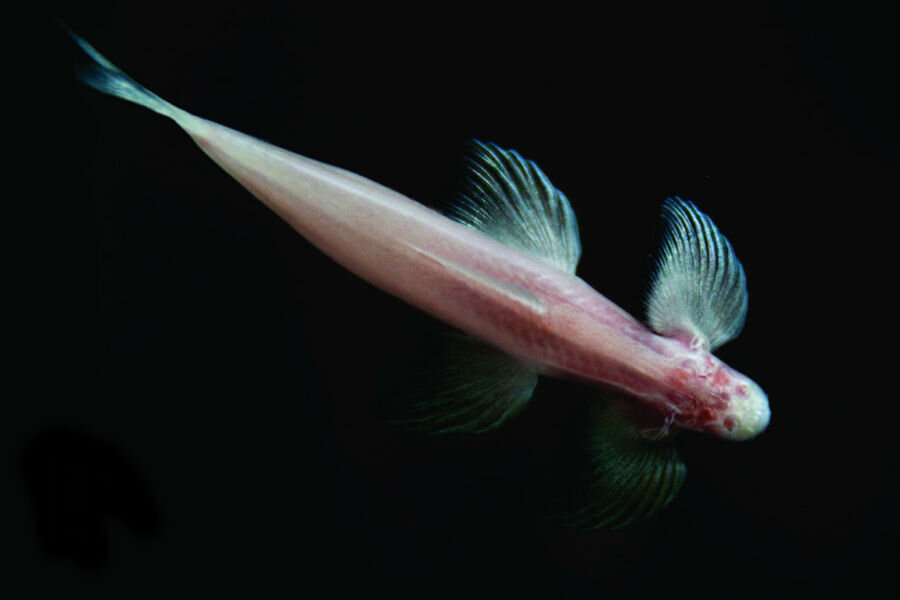This fish can walk. What can it teach us about terrestrial evolution?
Loading...
A report analyzing the characteristics of blind cavefish in Thailand found that the creature can walk, making it unique among all fishes and potentially showing how species may have evolved to live on land hundreds of millions of years ago.
The study, released this week in Scientific Reports by New Jersey Institute of Technology (NJIT) researchers, examines the uncommon anatomy of the Cryptotora thamicola, also known as the cave angel fish. The NJIT team analyzed C. thamicola’s morphology to determine why it, unlike any other known fish, exhibits a “tetrapodal walking behaviour” similar to land-dwelling vertebrates and if it could provide clues into evolutionary transition.
“They have fin structures unlike any fish that I have ever seen, anywhere,” one of the researchers said in a video about the discovery.
“Out of the 30,000 species of fishes that we know to exist, these fish are truly spectacular and look different than everything else that we’ve ever seen,” she added.
The cave angels, despite being blind, are able to navigate waterways and can actually climb rock faces in the same manner as salamanders. The fish may only reach one to two inches in length, but have evolved with a “robust pelvic girdle” that allows them to walk on land “with a tetrapod-like gait.”
The researchers note that many other species of fish have acquired some ways to navigate terrestrially through evolution, such as flopping across land or climbing vertically by undulation or suction. But C. thamicola remains unique in that it can walk with a “diagonal-couplets lateral sequence,” a movement style previously thought to be exclusive to tetrapods following the Devonian period during which vertebrates moved from the sea to land.
“From an evolutionary perspective, this is a huge finding,” said NJIT Department of Biological Sciences assistant professor Brooke Flammang, via Discovery News. “This is one of the first fish that we have as a living species that acts in a way that we think they must have acted when they evolved from a fluid environment to a terrestrial environment.”
The researchers hypothesize that “Developmental plasticity” acquired from the stresses put on C. thamicola through walking and climbing was promoted through the fish’s extreme habitat, the dark and isolated caves of Thailand.
They also found the fish’s footprint and fin shape to resemble those of Devonian-era tracks taken from riverbeds in Australia. This signals a striking similarity between the two eras of organisms, although the team noted that C. thamicola “is not an analogous representative of any early tetrapodamorph.” However, the connection still sheds light on the process of selection that led to the cave angels’ transformation over time.
Further study of C. thamicola remains difficult, if possible. They reside in only eight caves across their small range in Thailand, with a wild adult population estimated at 2,000, per the International Union for Conservation of Nature and Natural Resources. And while the species is protected under Thai law and remains isolated, agriculture and tourism activity remain threats to its safety. Still, researchers hope that the unique C. thamicola and other future discoveries could provide more information on how animals moved from the oceans and became terrestrial walkers.
“It’s really weird,” University of London biologist John Hutchinson told The New York Times. “It’s a good example of how much fish diversity there’s left to be discovered.”






